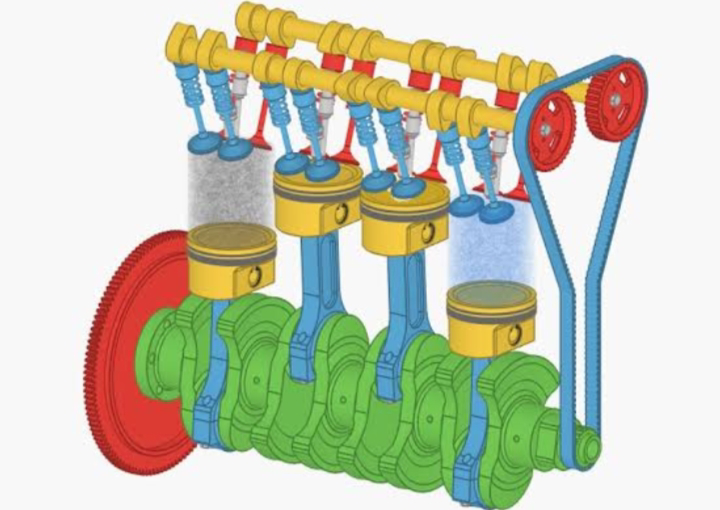Buckle up, folks, because we're about to take a wild ride through the inner workings of the internal combustion engine. If you've ever been curious about how your car's engine works, or just want to impress people at parties with your knowledge of mechanical engineering, then this is the article for you.
So, let's start with the basics. An internal combustion engine (ICE) is a type of heat engine that uses the combustion of fuel to produce mechanical energy. The most common type of ICE is the four-stroke engine, which is used in most cars and trucks.
The four-stroke engine works by going through four different stages, or strokes, to convert fuel into energy. These strokes are:
1. Intake stroke: During this stroke, the piston moves downward and the intake valve opens, allowing a mixture of air and fuel to enter the combustion chamber.
2. Compression stroke: After the intake stroke, the piston moves back up and compresses the air-fuel mixture. This compression raises the temperature and pressure inside the combustion chamber, making it easier for the fuel to ignite.
3. Power stroke: Once the air-fuel mixture is compressed, a spark plug ignites it, causing a controlled explosion. This explosion forces the piston back down, creating the mechanical energy that the engine uses to power the car.
4. Exhaust stroke: Finally, the piston moves back up again, pushing the exhaust gases out of the engine and out the tailpipe.
And that's it – those four strokes are what allow your car to move down the road at breakneck speeds (or crawl along in bumper-to-bumper traffic, depending on your mood).
Of course, there's a lot more to it than just those four strokes. For one thing, the engine needs a constant supply of air and fuel to keep running. That's where the carburetor or fuel injection system comes in – it mixes the air and fuel and delivers it to the combustion chamber in just the right proportions.
The engine also needs a way to regulate the timing of the four strokes. That's where the camshaft comes in – it controls the opening and closing of the valves that allow air and fuel into the combustion chamber and exhaust gases out.
And let's not forget about the pistons themselves. They're the real workhorses of the engine, moving up and down at incredible speeds to create the energy that powers your car. They're also what gives the engine its distinctive sound – that rhythmic thumping that you hear when you rev the engine.
Now, all of this might sound pretty straightforward so far. But there are a lot of factors that can affect how well an engine runs, from the temperature of the air to the quality of the fuel to the altitude of the location. That's why engines need a whole bunch of other components to keep them running smoothly, like the cooling system, the oil system, and the ignition system.
The cooling system, for example, helps regulate the temperature of the engine by circulating coolant (usually a mixture of water and antifreeze) through the engine block and radiator. This helps prevent the engine from overheating and causing damage.
The oil system, meanwhile, helps lubricate the moving parts of the engine. Without oil, the friction between the pistons and the cylinder walls would quickly cause the engine to seize up and stop working.
And finally, the ignition system is what creates the spark that ignites the air-fuel mixture. This can be done using a spark plug (the most common method), or in some engines, a glow plug or a sparkless ignition system.
So there you have it – the internal combustion engine in a nutshell. Of course, there are a lot of variations and nuances to this basic design, but the four-stroke engine is the most common and widely used type of ICE. And whether you're a car enthusiast or just someone who wants to understand how the world works a little better, knowing how an engine works is a pretty cool thing. So go ahead, impress your friends and family with your newfound knowledge – just don't be surprised if they start asking you to fix their cars for them

Comments
Post a Comment